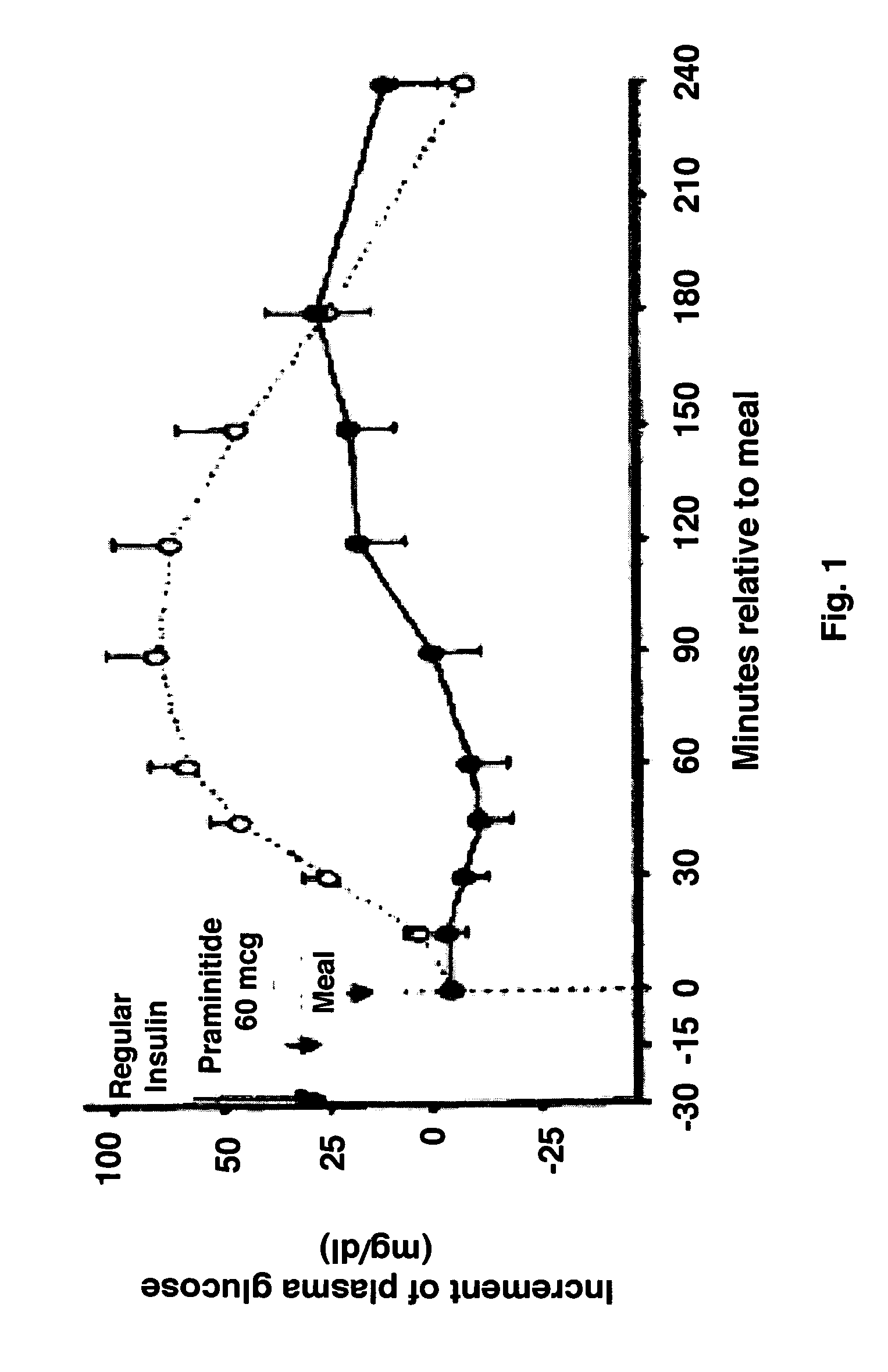Neurotoxin therapy for postprandial hyperglycemia
a technology of neutrophils and postprandial hyperglycemia, applied in the field of gastroenterology, can solve the problems of hyperglycemia, small observational studies were inconclusive, increased retention of meals with consequent satiety and weight loss, etc., and achieve the effect of effectively treating postprandial hyperglycemia, effective treatment of obesity in the individual, and reducing the number of patients
- Summary
- Abstract
- Description
- Claims
- Application Information
AI Technical Summary
Benefits of technology
Problems solved by technology
Method used
Image
Examples
example 1
[0023]Study Design: Open label, pilot[0024]Study Population: Morbidly obese patients (BMI ≧40) presenting to the Obesity Center.[0025]Number of Patients: 20, at least 10 of whom will have overt diabetes (requiring insulin or oral antidiabetic agents)
Exclusion Criteria
[0026]1. Age 65[0027]2. BMI [0028]3. History of frequent hypoglycemic episodes[0029]4. HbA1C >10[0030]5. Severe pulmonary or cardiovascular disease precluding conscious sedation for endoscopy[0031]6. Known allergic reaction to botulinum toxin injection[0032]7. Known delay in gastric emptying or symptoms suggestive of the same i.e. nausea and vomiting
Pre-Injection Interventions
[0033]1. Standard counseling and nutritional advice to all patients for a 4 week period prior to BoNT injection[0034]2. HbA1C one week before[0035]3. Oral glucose tolerance test[0036]4. Fasting and post-prandial levels of insulin, glucagon, ghrelin, amylin, GLP-1, GIP, NPY, PYY.[0037]5. Satiety index using liquid test meal[0038]6. Sol...
example 2
Interventions:
Upper Endoscopy and Injection of BoNT / B
[0039]Endoscopy is done using conscious sedation (typically a combination of midazolam and fentanyl). Botulinum neurotoxin is injected using an 8 mm sclerotherapy needle inserted via the working channel of the endoscope. Based on the animal studies, a good estimate of the optimal site and dose for use in humans will be possible. For purposes of the study, and based on experience, 10 mg of Botulinum neurotoxin in rats can be considered equivalent to about 100 units in humans.
Post-Injection Measurements:
[0040]1. Daily weight and caloric intake measurement until end of study (2 consecutive weeks of weight gain)[0041]2. Satiety index using liquid test meal at 2 weeks and then at 4; week intervals until end of study[0042]3. Solid and liquid phase gastric emptying at baseline and at 4 weeks after injection of BoNT / B[0043]4. Oral glucose tolerance test 2 weeks after injection and at 4 week intervals until end of study[0044]5. Fasting and...
example 3
Sample Size and Power Calculations
[0056]This is an open label single cohort pilot study so formal sample size calculations have not been done. The report by Foschi et al randomized 24 patients to either placebo or botulinum neurotoxin. The group receiving Botulinum neurotoxin (n=12) demonstrated a reduction in weight of 11 kg with calculated standard deviation of about 3.5 kg. With respect to changes in postprandial hyperglycemia, in a single-blind, placebo-controlled, crossover study, 18 evaluable subjects with type 1 diabetes underwent two standardized breakfast meal tests and received pramlintide or placebo in addition to their preprandial insulin (Ceriello et al Diabetes Care 2005;28:632-37). Preprandial administration of pramlintide (which acts principally by retarding gastric emptying), as an adjunct to regular insulin, prevented the initial rise in postprandial plasma glucose and significantly reduced the overall glucose excursion observed with regular insulin alone (placebo)...
PUM
| Property | Measurement | Unit |
|---|---|---|
| weight loss | aaaaa | aaaaa |
| weight | aaaaa | aaaaa |
| weight | aaaaa | aaaaa |
Abstract
Description
Claims
Application Information
 Login to View More
Login to View More - R&D
- Intellectual Property
- Life Sciences
- Materials
- Tech Scout
- Unparalleled Data Quality
- Higher Quality Content
- 60% Fewer Hallucinations
Browse by: Latest US Patents, China's latest patents, Technical Efficacy Thesaurus, Application Domain, Technology Topic, Popular Technical Reports.
© 2025 PatSnap. All rights reserved.Legal|Privacy policy|Modern Slavery Act Transparency Statement|Sitemap|About US| Contact US: help@patsnap.com

